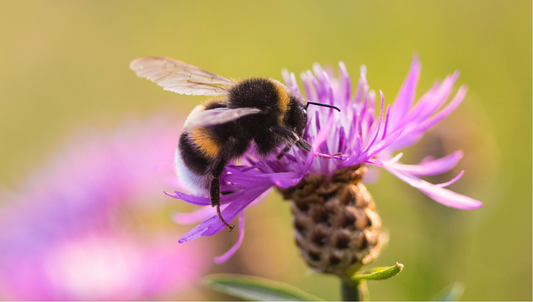Honey, Fig & Agave Pavlova

FREE SHIPPING ON ALL ORDERS OVER £30

Rated 5.0 stars by 1 users
8
150 minutes
Try something new and fantastic that everyone will love

8 Figs
2 Oranges
2 Small sprigs rosemary
8 Egg whites, large
1 tbsp Hilltop Organic Agave Honey for drizzling
2 tbsp Lemon juice
3 tsp Cornstarch
2 cups Granulated sugar
2 tsp Vanilla extract
2 tsp Distilled white vinegar
1 tbsp Pistachios
400 ml Greek yoghurt
600 ml Whipping cream
Preheat oven to 350°F. Line two baking sheets with parchment paper. Trace two 9” circles on the parchment using a cake pan or dinner plate as a guide. Flip each of the parchment papers over and set aside
Mix the sugar and cornstarch together in a small bowl
Mix the vanilla and vinegar together in a separate small bowl.
Place the egg whites in the bowl of a stand mixer fitted with the whisk attachment. (Alternatively, use an electric hand mixer and large bowl.) Start beating them on low speed, then gradually increase the speed to medium.
When the egg whites have reached soft peak consistency and the beaters leave trails in the whipped whites, begin adding the sugar mixture a few tablespoons at a time, waiting a few seconds between each addition. While doing this, gradually increase the speed so that you are at maximum speed once all the sugar has been added.
Once all the sugar has been mixed in, continue beating until the meringue is super glossy and holds stiff peaks and all the sugar has been incorporated. You can test this by dipping your finger into the mixture and rubbing the foamy egg mixture between fingers. If it’s quite grainy from the sugar still continue mixing, it not you are done.
Stop the mixer and sprinkle the vanilla and vinegar over the meringue. Beat for another 20 seconds to fully combine.
Use a spatula to scrape half of the meringue onto the centre of the one of the large parchment circles, doing the same with the rest on the other sheet. Working from the centre out, spread the meringue to fill the circle. Smooth the sides if desired or leave it in billowy lumps.
Reduce temp to 250°F before putting both pavlovas in the oven then Bake the meringue for 1.5 hours. The pavlovas are done when the outsides are dry to the touch. The interior of a properly cooked pavlova should be marshmallowy. It’s fine if cracks form in the crust.
Once done turn oven off and take a wooden spoon and slide it between the stove door and stove to keep it slightly ajar and leave the meringue in to cool for a few hours and even up to over night which is what I prefer.
Remove the meringue when ready to assemble or if you are trying to make ahead, the pavlova can be wrapped in plastic or sealed in an airtight container and kept for several days unless your house gets very humid (in which case, eat your pavlova right away - trust me on that)
For the filling and the figs:
Preheat the oven to 400°F. Put the figs in a roasting pan, drizzle over the honey and scatter rosemary over figs. Bake for 10 mins. Use a slotted spoon to transfer the figs to a bowl, then stir the lemon juice into the syrup in the pan and set aside to cool. Must be completely cool before topping pavlova cake.
Just before you’re ready to serve, make the whipped cream: In a large bowl, mix the cream with a mixer to stiff peaks. Fold through the yogurt, the orange zest and all the strained fig syrup
To assemble, put a meringue pavlova on a serving plate. Very gently top with half the cream, using a spatula or you can pipe on the cream as well which helps you have a lighter touch on the pavlova. Repeat with the remaining meringue and cream. Arrange the figs on top, then scatter over the pistachios and drizzle with some honey to serve and serve within 1 to 2 hours. (Do not refrigerate; the meringue as it will quickly soften.)

Most people know honey bees because of the golden honey we eat. But what about bumble bees, do they make honey too? The answer is yes... but not in the...
Most people know honey bees because of the golden honey we eat. But what about bumble bees, do they make honey too? The answer is yes... but not in the...

When it comes to sweeteners, honey often gets praised as the more natural, health-conscious choice. But is it really better than sugar? Whether you're stirring it into tea or baking...
When it comes to sweeteners, honey often gets praised as the more natural, health-conscious choice. But is it really better than sugar? Whether you're stirring it into tea or baking...

So, you’ve found an old jar of honey at the back of the cupboard. Maybe it’s a little thick, a bit cloudy, or stubbornly crystallised. But the real question is,...
So, you’ve found an old jar of honey at the back of the cupboard. Maybe it’s a little thick, a bit cloudy, or stubbornly crystallised. But the real question is,...
Hilltop Honey Ltd,
Vastre Industrial Estate,
Newtown SY16 1DZ
Sign up for 15% off, latest sweet spots, recipes, news and competitions.


©2025 Hilltop Honey®. All rights reserved
